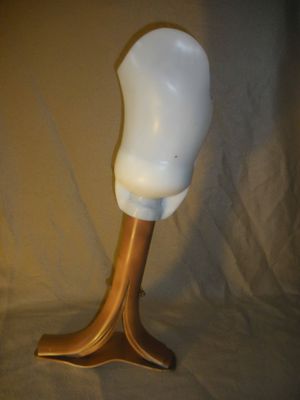
Problem being addressed[edit | edit source]
Physical disability hinders the quality of life an individual, no matter whether in the developed or developing country. But given the limited resources, technologies and services at resource-limited settings, higher incidents of disabilities due to long-term wars and natural disasters, it is crucial to come up with innovative prosthetic solutions for such settings. 2-ft Prosthetics states, "The need for affordable prosthetic legs is great. Disease, accidents, and warfare are the primary causes of the loss of a limb. The recent earthquake in Haiti has led to over 100,000 new amputees. The situation is no different in Cambodia, where 1 out of every 236 Cambodians is an amputee. In Africa there are only 30 prosthetic clinics. These clinics face inadequate funding and technical support. When a person loses a limb, they are faced with emotional and financial lifestyle changes. Fortunately, high-tech prosthetic devices that restore a person's basic skills and independence are available but expensive."
Detailed description of the solution[edit | edit source]
2ft Prosthetics is an engineering team out of the Brigham Young University that is engaged in the production of quality and affordable below the knee prosthetic limb for developing nations. They have been able to use simple tools and materials such as a PVC pipe, a regular saw, drill and a heating system (like a normal heater) to produce an artificial leg as one of their early stage prototypes. The final cost is claimed to be less than 20 USD and the materials used are widely available across the developing world.
An interesting point about this design team is that they are not only working on product design, but also on social venture creation, creating a sustainable business and enabling the local communities to be involved in the process. The project is still in its early stages, but the design team has recently won some financial prizes to help them to move their field testing to Africa this summer for the assessment of different sides of their design.
Designed by[edit | edit source]
- Designed by: The prosthesis was designed by a group of students from Brigham Young University.
When and where it was tested/implemented[edit | edit source]
The prosthesis has been tested in El Salvador, Tonga and Guatemala.
Funding Source[edit | edit source]
This project is funded through Brigham Young University.
References[edit | edit source]
Internally generated reports[edit | edit source]
2ft prosthetics. (2011). Link available here.